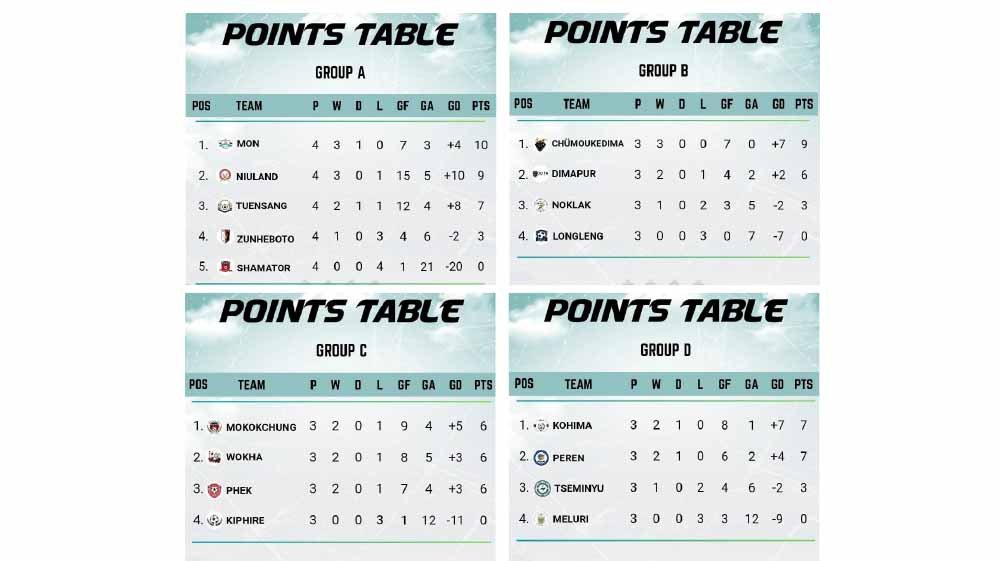The Dr. T. Ao Trophy 2025 has transitioned from its fierce group-stage showdowns to the high-stakes quarterfinals, trimming the competition to eight resilient teams. Across 28 matches in seven days featuring every district, the tournament has showcased tactical rigor, flair and individual brilliance as teams chased the dream of glory.
Origin of the Championship:
Instituted as Nagaland’s Inter-District Football Championship in the early 1970s, the tournament was officially renamed in 2004 after Dr. Talimeren Ao — a pioneering Naga footballer who captained India’s team at the 1948 London Olympics and later became a distinguished physician. This rebranding was part of Chief Minister Neiphiu Rio’s effort to pay tribute to Dr. T. Ao’s legacy, including a cash prize to incentivize competition.
Dr. Ao’s legacy stretches beyond the pitch. He was honored with national recognition, including a commemorative postage stamp, and in 2025 the All India Football Federation (AIFF) rechristened the Junior Girls National Championship in his name as the “Dr. Talimeren Ao National Football Championship for Junior Girls.” Now in its 24th edition, the 2025 Championship runs from August 1 to 15 at the Indira Gandhi Stadium, Kohima, a venue that has hosted major regional football events since its inauguration in 2003.
Organized by the Nagaland Football Association (NFA) under the aegis of the AIFF and in partnership with the Department of Youth Resources & Sports and the Kohima District Planning Board, the tournament follows a league-cum-knockout format, featuring teams from 17 districts.
All the matches so far have been telecast live on SportsCast India.
The 2025 Campaign:
The Dr. T. Ao Trophy 2025 has progressed from its high-intensity group stages into the knockout quarterfinal phase, narrowing the field to eight determined teams who will now vie for a place in the semi-finals. Over several days of competitive football, the tournament witnessed displays of tactical discipline, attacking flair and moments of individual brilliance, as each district sought to secure a spot among the last eight.
In Group A, Mon emerged unbeaten leaders with 10 points, edging past Niuland, who finished second with 9 points but boasted the highest goals scored in the group (15). Tuensang’s spirited campaign earned them third with 7 points, but they had to bow out along with Zunheboto and Shamator as only the top two from each group advanced.
Group B was ruled by Chümoukedima, the only team in the tournament yet to concede a goal, topping the table with a perfect 9 points. Dimapur secured the second spot on 6 points, while Noklak and Longleng exited without making the cut.
Group C ended in a rare triple tie, with Mokokchung, Wokha, and Phek all locked at 6 points from two wins each. Goal difference decided the order, with Mokokchung (+5) taking the top spot and Wokha (+3) edging Phek for second place, while Kiphire finished winless. In Group D, Kohima and Peren both advanced unbeaten on 7 points, separated by goal difference (+7 and +4 respectively). Tseminyu and Meluri exited after underwhelming campaigns.
The quarterfinals will see the top two from each group clash in knockout fixtures as the race for Nagaland’s most prestigious football trophy intensifies.
The group stage was a rigorous test, with every side playing multiple fixtures that demanded both physical endurance and mental resilience. Teams that advanced distinguished themselves through consistent performances, sharp finishing, and solid defensive organisation. Many matches were decided by narrow margins, underlining the evenly matched nature of the competition and the importance of seizing opportunities when they arose.
The quarterfinal lineup now features some of the tournament’s most in-form sides — those who not only topped or secured strong positions in their groups, but also showed the adaptability required to overcome varied opponents. They carry into the knockout rounds the momentum built in earlier fixtures, each hoping to sustain their form under the pressure of elimination football.
Meanwhile, for teams that could not progress beyond the group stage, the tournament provided a platform to showcase emerging talent and reinforce district-level football culture. Though their campaigns ended earlier than hoped, many sides delivered spirited performances, earning commendation for their determination and competitive spirit. The experience gained will be invaluable for future editions, as players and coaches alike reflect on lessons learned and areas for growth.
Ethos Creation:
One of the standout visual highlights has been the stage — an artistic blend of tradition and modernity conceptualized and executed by Ethos Creation.
Founded and managed by two close friends with a shared passion for creativity, Ethos Creation was established to merge cultural heritage with contemporary design. Their vision is to build a reputation rooted in trust, identity, and core values, while ensuring each project tells a meaningful story. For this year’s tournament, the group transformed the stage into more than just an event backdrop — it became a cultural statement. Adorned with traditional attires and motifs, the design not only honored the community’s heritage but also incorporated sleek modern elements, reflecting the evolving spirit of the region.
Speaking of their approach, the founders expressed their commitment to preserving and celebrating local traditions while adapting to today’s fast-changing creative landscape. “Our aim is to ensure culture thrives even as the world embraces change,” they said.
As the competition now moves deeper into the decisive stages, observers eagerly anticipate how strategic adjustments, team cohesion, and mental strength will define outcomes. The journey through group battles and into the final eight underscores how football in Nagaland is more than a game — it promotes unity and opportunity through sport. With only one champion to be crowned, the path ahead promises more drama, skill, and the kind of passionate football that has defined the Dr. T. Ao Trophy since its inception.

